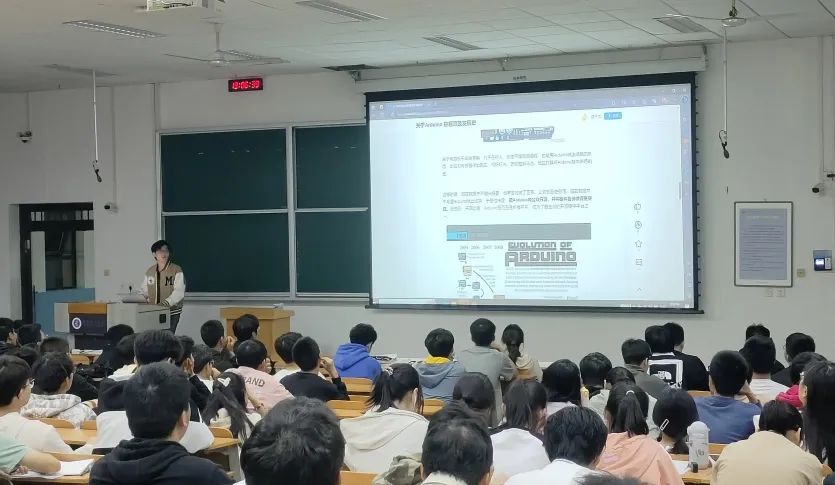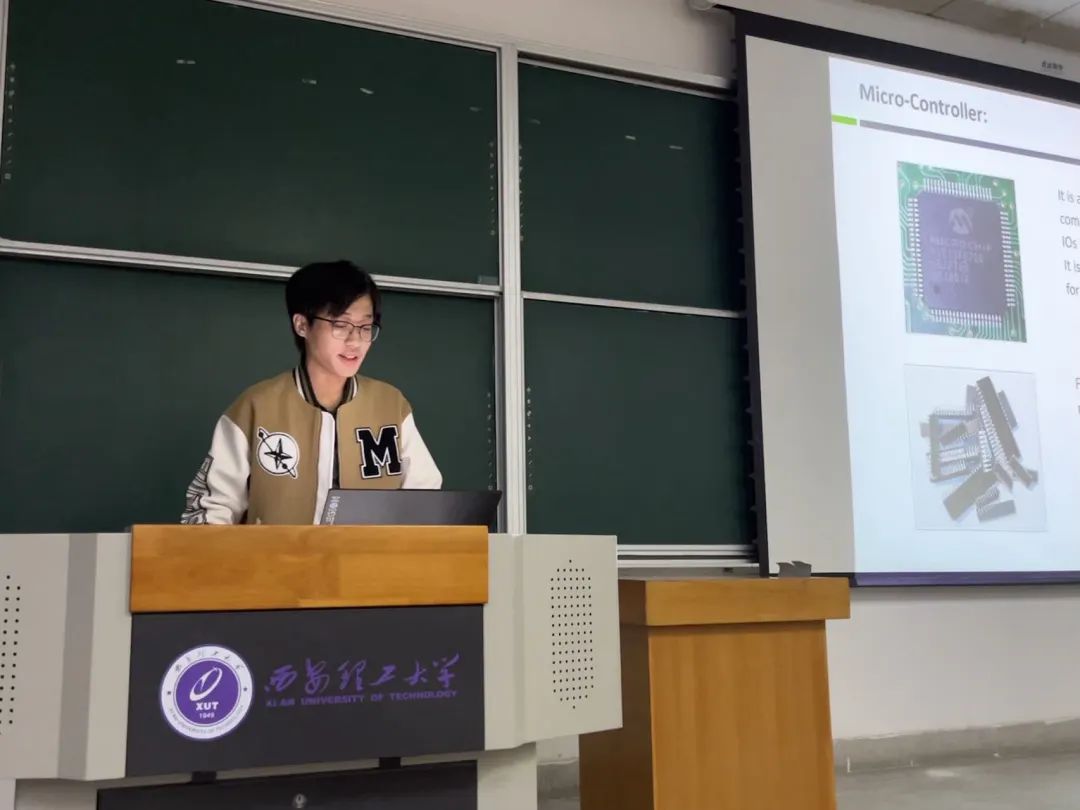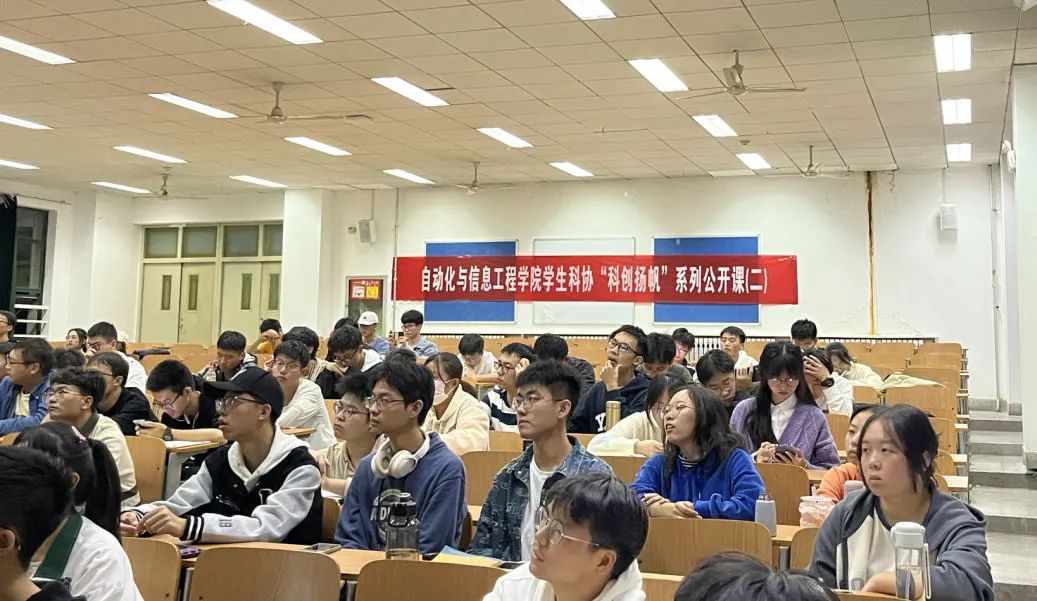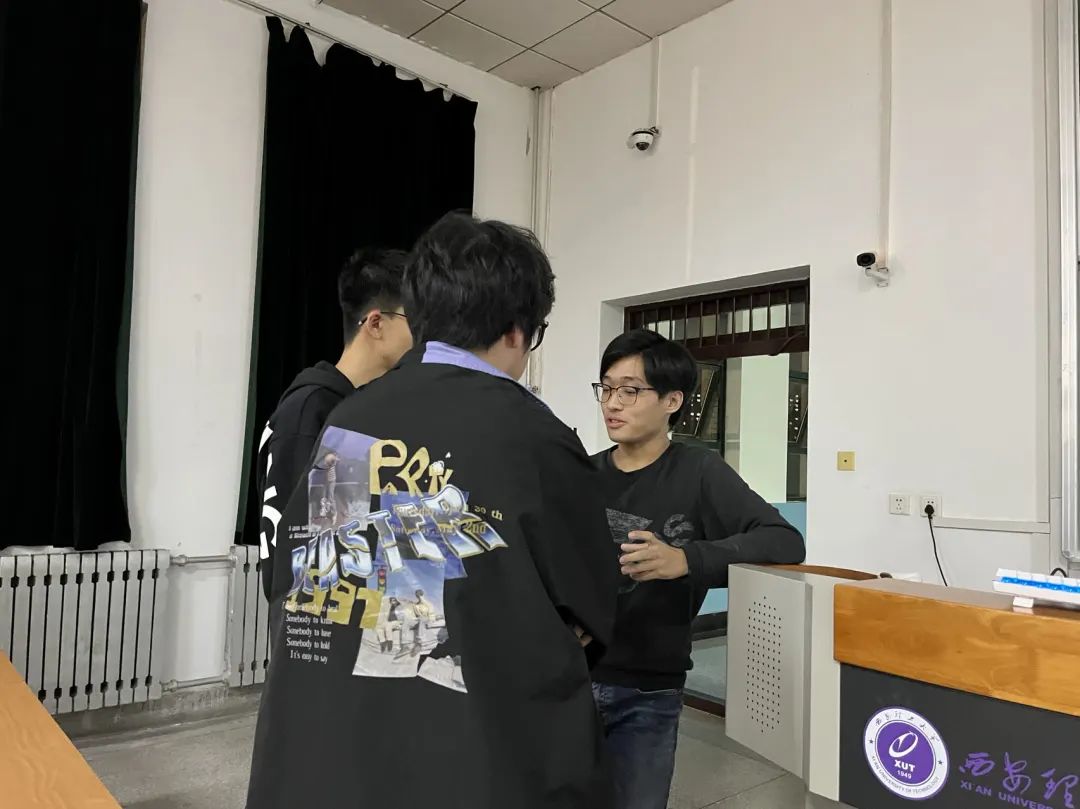“Arduino Microcontroller Workshop Series (Part 2)”
——Explanation of Arduino Microcontroller
To help freshmen and sophomores understand the basic knowledge of Arduino microcontrollers and lay the foundation for the upcoming Li’ao Cup competition, the Student Science and Technology Association of the School of Automation and Information Engineering (hereinafter referred to as “Science Association”) held the “Arduino Microcontroller Workshop Series—Explanation of Arduino Microcontroller” on October 14 at 7 PM in Room 10-401, Qujiang Campus. The speaker was Chen Junliang, a member of the Science Association’s technical team and former president of the Robotics Club.

Introduction to Arduino
Chen Junliang first aroused the students’ interest by discussing the development history of Arduino, and then introduced what Arduino is—Arduino is an open-source hardware platform, a convenient and flexible open-source electronic prototyping platform.
After explaining the basic meaning of Arduino, Chen Junliang briefly introduced several types of Arduino development boards, using the UNO, which students might be familiar with, to demonstrate the various parts of the Arduino development board. He then provided a brief introduction to some basic knowledge, such as digital signals and sensors.

Understanding Basic Code
After introducing the hardware part of Arduino, Chen Junliang briefly introduced some basic coding knowledge. He guided students from character types to learning about operators and statements, providing a knowledge base for students to understand some simple code and engage in hands-on practice.

Preparation for the Li’ao Cup
After that, Chen Junliang shared experiences for the upcoming Li’ao Cup. He provided feasible ideas and commonly used software and resource platforms based on previous Li’ao Cup projects. He also enriched students’ knowledge through explanations of various open-source platform projects online, deepening their understanding of project processes and informing them how to utilize various online resources for learning, and answered some of the students’ questions.

This public class not only stimulated the students’ enthusiasm for learning but also strengthened their confidence in participating in the Li’ao Cup. The Li’ao Cup is not just a technology competition; it is also a microcosm of various projects for the students in the future. I hope students will always maintain their passion for scientific innovation, never forget their original intention, and forge ahead.
END
School of Automation and Information Engineering
Editor | Rong Haodi
Typesetting | Lin Wenxuan, Liu Chenxin
School Review | Shi Yinan
Editor-in-chief | Fan Rong, Fu Borui
Review | Zhai Yuxiang, Lu Jiangtao